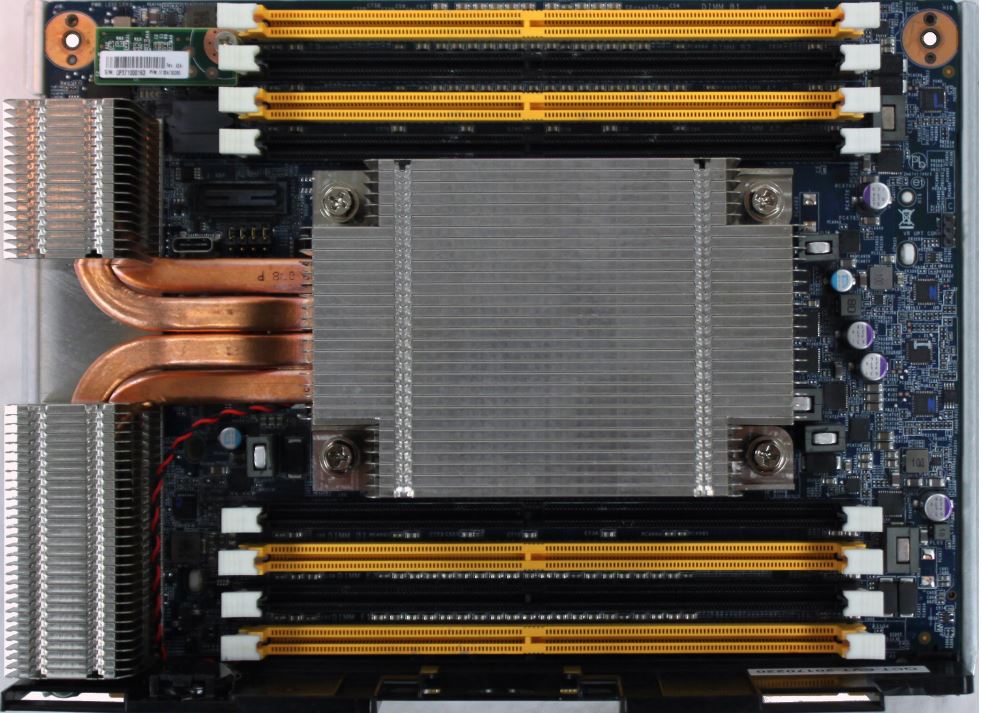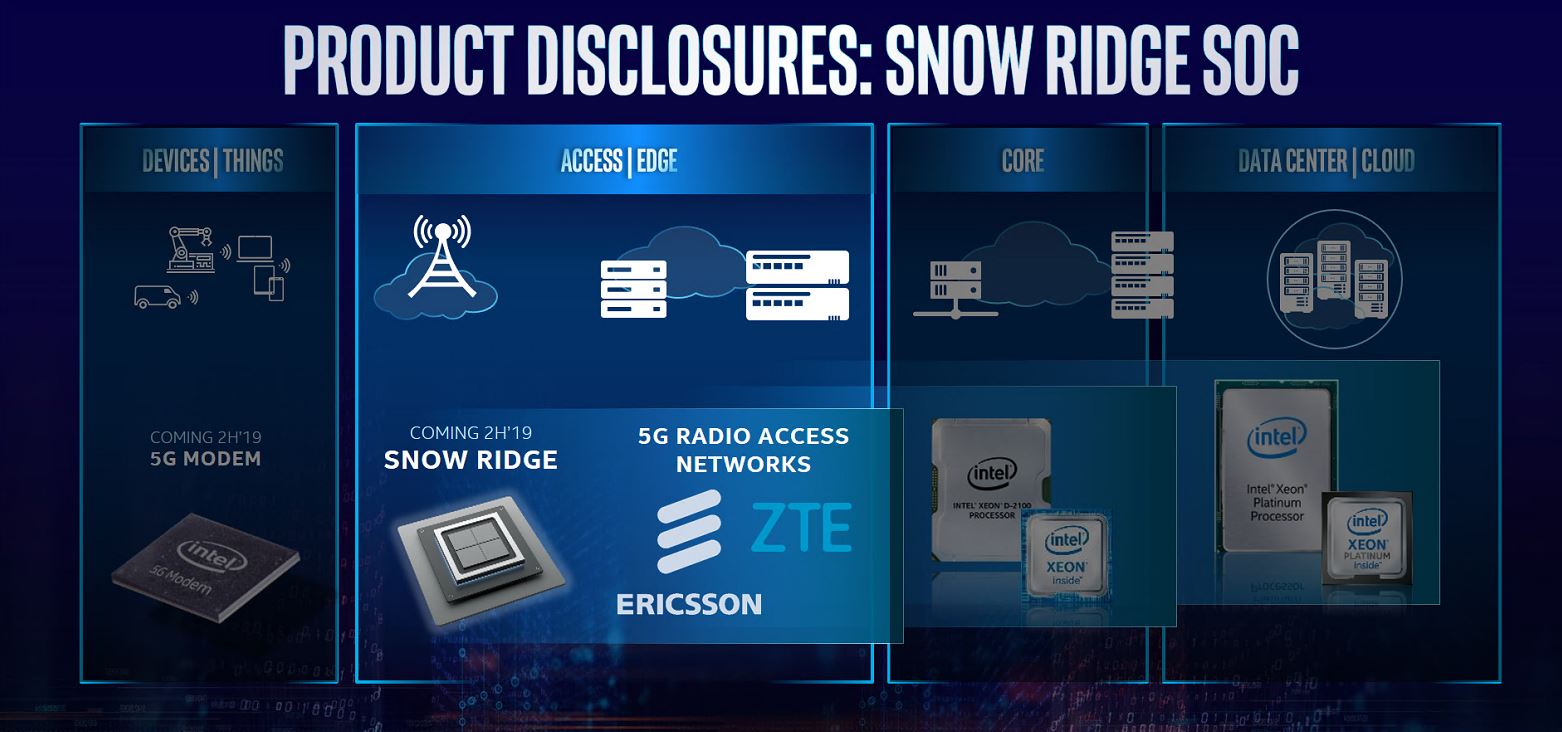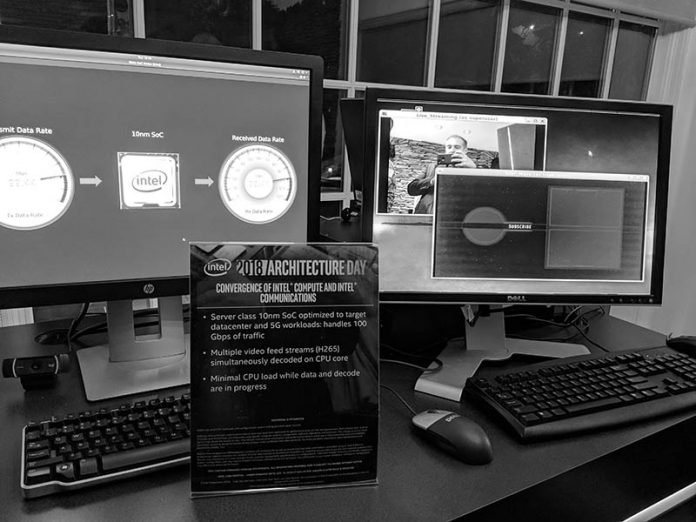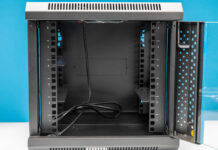Today we have a few new details around the Intel embedded roadmap. Specifically, we will see Intel Ice Lake-D, Snow Ridge-NS, and Tanner Ridge embedded products. These are still several quarters out, so these may change, but we are starting to see a trickle of new details. At Computex 2019, we saw details in a major vendor’s booth of a few new embedded products. We had not heard these details yet, but there were six folks from Intel standing next to me while I was taking a photo of the embedded roadmap and none took issue with the roadmap being shown publicly. Just in case, we are not going to publish that photo to keep the source confidential.
Intel Xeon Ice Lake-D
From what we are hearing, Intel Ice Lake-D is not planned for 2019, despite the fact that we saw Intel Ice Lake generations on 10nm launch at Computex 2019. We learned a few new things about Ice Lake-D.
As expected, Ice Lake-D will have PCIe Gen4 and 10nm fab process. Like current generation Intel Xeon D parts, the Xeon D-1500, Xeon D-1600, and Xeon D-2100 series, Intel QuickAssist technology will be part of the new chips. If you are in the embedded market and are thinking about adopting QAT, the technology has a continued roadmap.

We expect the Intel Xeon Ice Lake-D will still utilize DDR4. The memory is interesting. What we are hearing is that there may be a low core count and a high core count version of Ice Lake-D that may have different memory configurations. Intel needs to update the lower-power parts beyond the 2-channel lower-power Xeon D-1600 series which is essentially a minor update to the 2015 era Intel Xeon D-1500. Ice Lake-D low core count may have only 2 channel memory while the high core count will have 4-channel DDR4 memory like the current Intel Xeon D-2100 series.
Of note, this is somewhat similar to how AMD EPYC 3000 segmented the market using lower core count two-channel DDR4 parts with higher core count four-channel DDR4 parts.
Intel Snow Ridge-NS
Intel Snow Ridge is very exciting. Intel Xeon D Hewitt Lake and Snow Ridge SoCs were detailed around the time of Mobile World Congress. Even though we have heard that Snow Ridge will be 10nm, we expect Snow Ridge-NS to support PCIe Gen3 and have dual-channel DDR4 memory.

The Snow Ridge-NS product should be found in networking control planes and edge endpoints.
Intel Tanner Ridge
This one is not to be confused with the late 1990’s era Pentium III Tanner CPU. Instead, Intel Tanner Ridge will be a new network focused processor. This one is a bit further out, but we hear that it will be still a DDR4 design successor to the Intel Denverton family. This one is still a bit out, but we are hearing that there may be very low power designs optimized down to even single channel memory for x86 control plane designs.
The Intel Tanner Ridge design shown was slated to fill the market segment where the Intel Atom C3338 resides with the Snow Ridge-NS slotted to fill higher-end segments that the Intel Atom C3000 series currently fills.
Final Words
It will be great to see Intel push its embedded portfolio with Ice Lake-D, Tanner Ridge, and Snow Ridge-NS in the coming quarters and years. Beyond these products, we expect to see a transition to DDR5. Specs and segments can still change and some of these parts shown were picked to relate to the OEM’s product needs rather than the actual Intel embedded roadmap and specs. Still, this was displayed in front of a gaggle of Intel employees (not the PR team) at Computex 2019 and not one of then voiced a concern with the above information being shown.





“We expect the Intel Xeon Ice Lake-D will still utilize DDR4.”
As opposed to? DDR5? Come on Patrick, give up the goods! LOL